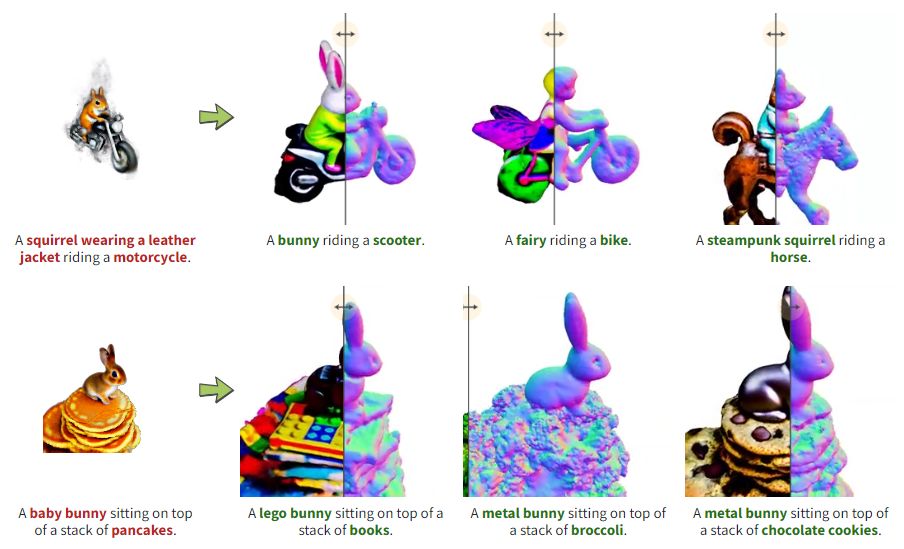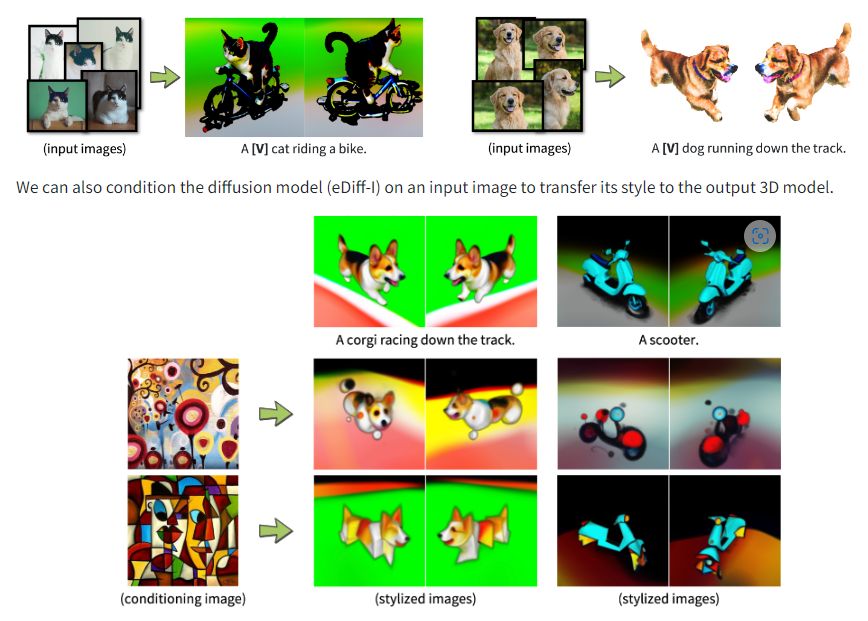Nvidia unveiled Magic3D, a novel Text-to-3D content creator

In Brief
Nvidia launches Magic3D to help designers create 3D content faster
Nvidia has announced Magic3D, a text-to-3D content creator software. The software turns text descriptions of objects into three-dimensional (3D) digital models. The software is based on a neural network that has been trained on a large dataset of 3D models. It can generate 3D models from a single 2D image or a series of 2D images.

Magic3D is a new text-to-3D content creation tool that produces high-quality 3D mesh models. We provide users with new ways to control 3D synthesis, opening up new avenues to various creative applications by combining image conditioning techniques and a prompt-based editing approach. From text input prompts, Magic3D can produce 3D textured mesh models of the highest quality. It makes use of a coarse-to-fine technique to learn the 3D representation of the target material by combining low- and high-resolution diffusion priors. Magic3D creates 3D stuff twice as fast as DreamFusion and eight times better resolution supervision.
Developers can alter portions of the underlying text prompt that generated the coarse model, then fine-tune the NeRF and 3D mesh models to produce an edited high-resolution 3D mesh.

It may optimize the 3D models with the provided prompts and fine-tune the diffusion models with DreamBooth given input photographs for a subject instance. The 3D models can effectively preserve the subject’s identity.

AI uses a two-stage coarse-to-fine optimization system to produce text-to-3D material that is both quick and of excellent quality. In the first step, it uses a low-resolution diffusion prior to producing a coarse model, which we then accelerate using a hash grid and sparse acceleration structure. In the second stage, the model employs a textured mesh model that is initialized from the coarse neural representation to enable optimization using a high-resolution latent diffusion model in conjunction with an effective differentiable renderer.
Read more:
Disclaimer
In line with the Trust Project guidelines, please note that the information provided on this page is not intended to be and should not be interpreted as legal, tax, investment, financial, or any other form of advice. It is important to only invest what you can afford to lose and to seek independent financial advice if you have any doubts. For further information, we suggest referring to the terms and conditions as well as the help and support pages provided by the issuer or advertiser. MetaversePost is committed to accurate, unbiased reporting, but market conditions are subject to change without notice.
About The Author
Damir is the team leader, product manager, and editor at Metaverse Post, covering topics such as AI/ML, AGI, LLMs, Metaverse, and Web3-related fields. His articles attract a massive audience of over a million users every month. He appears to be an expert with 10 years of experience in SEO and digital marketing. Damir has been mentioned in Mashable, Wired, Cointelegraph, The New Yorker, Inside.com, Entrepreneur, BeInCrypto, and other publications. He travels between the UAE, Turkey, Russia, and the CIS as a digital nomad. Damir earned a bachelor's degree in physics, which he believes has given him the critical thinking skills needed to be successful in the ever-changing landscape of the internet.
More articles

Damir is the team leader, product manager, and editor at Metaverse Post, covering topics such as AI/ML, AGI, LLMs, Metaverse, and Web3-related fields. His articles attract a massive audience of over a million users every month. He appears to be an expert with 10 years of experience in SEO and digital marketing. Damir has been mentioned in Mashable, Wired, Cointelegraph, The New Yorker, Inside.com, Entrepreneur, BeInCrypto, and other publications. He travels between the UAE, Turkey, Russia, and the CIS as a digital nomad. Damir earned a bachelor's degree in physics, which he believes has given him the critical thinking skills needed to be successful in the ever-changing landscape of the internet.


















































